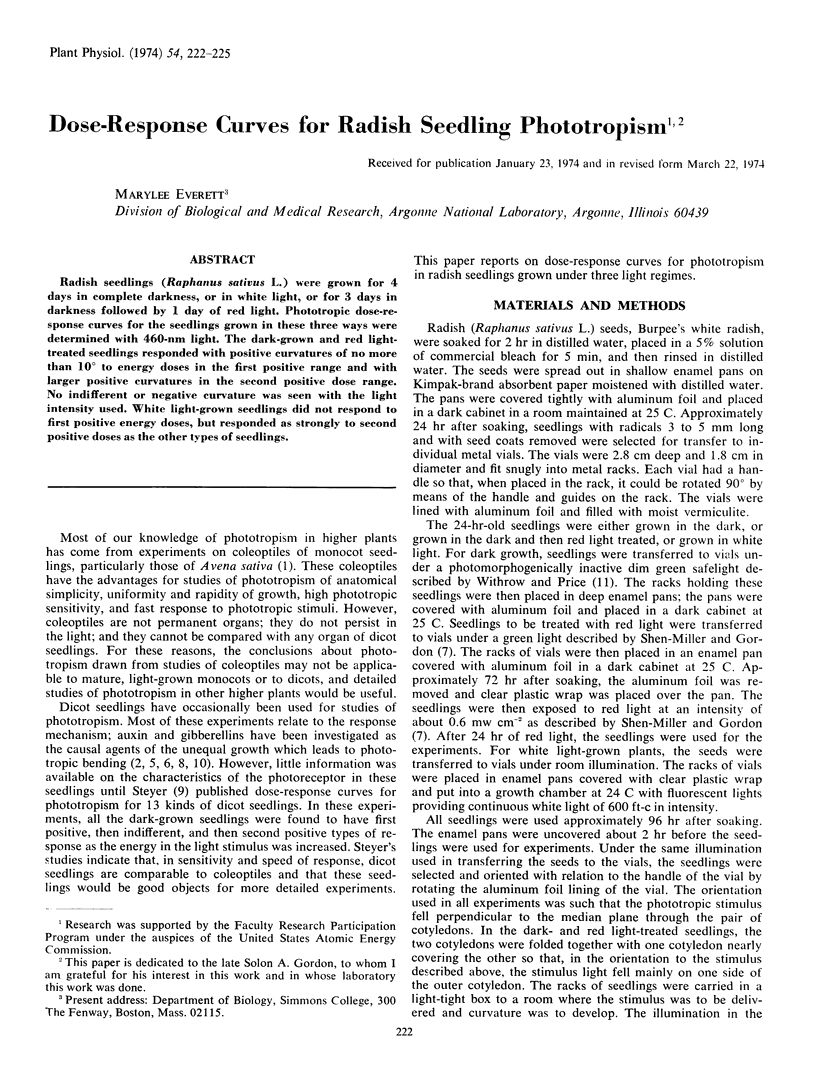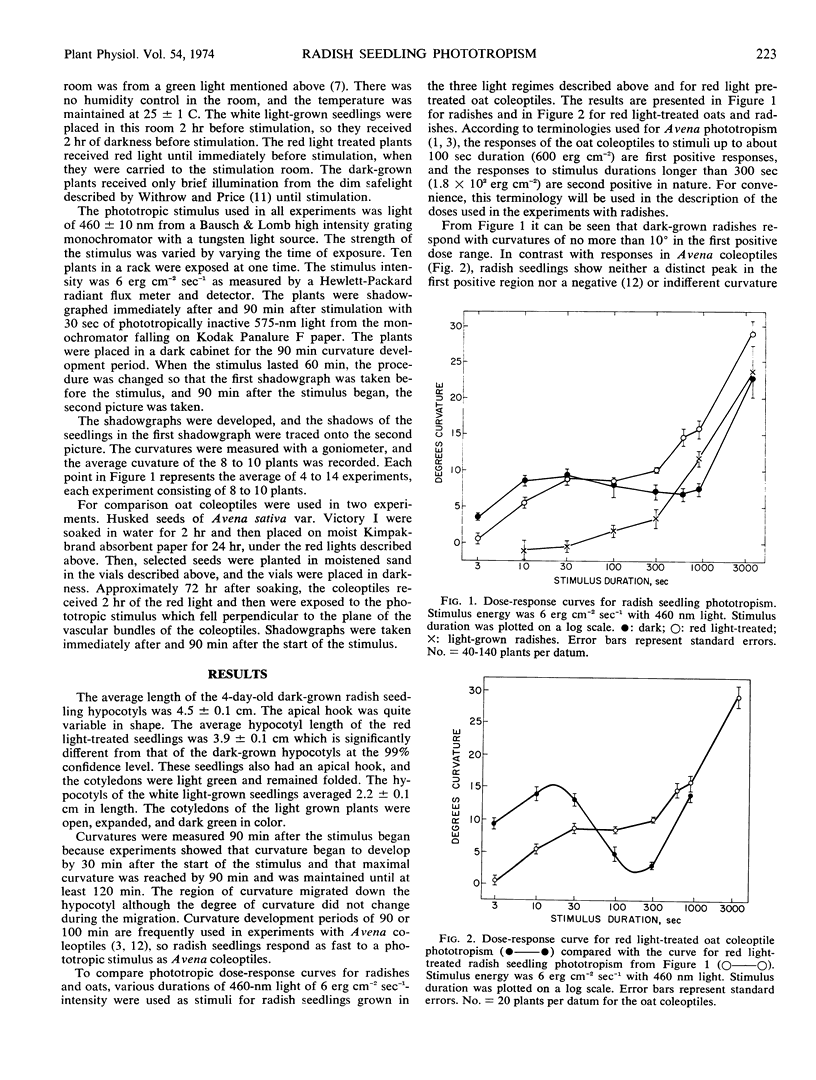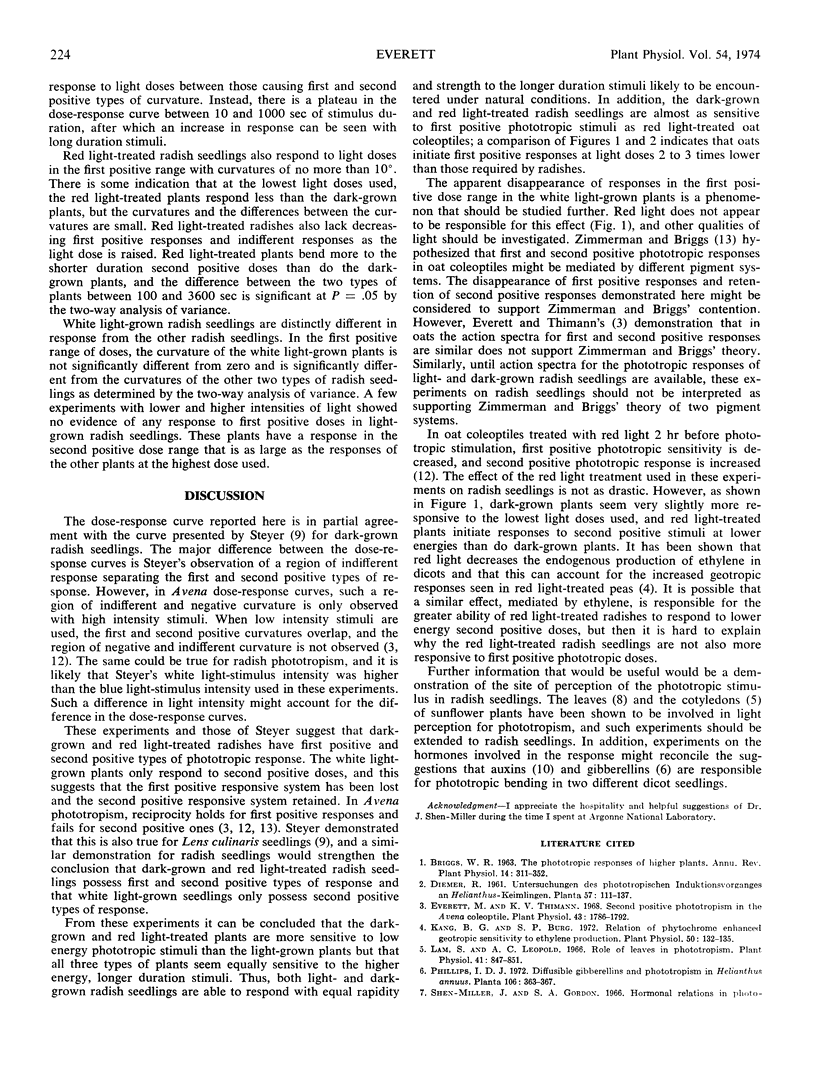Abstract
Radish seedlings (Raphanus sativus L.) were grown for 4 days in complete darkness, or in white light, or for 3 days in darkness followed by 1 day of red light. Phototropic dose-response curves for the seedlings grown in these three ways were determined with 460-nm light. The dark-grown and red light-treated seedlings responded with positive curvatures of no more than 10° to energy doses in the first positive range and with larger positive curvatures in the second positive dose range. No indifferent or negative curvature was seen with the light intensity used. White light-grown seedlings did not respond to first positive energy doses, but responded as strongly to second positive doses as the other types of seedlings.
Full text
PDF



Selected References
These references are in PubMed. This may not be the complete list of references from this article.
- Everett M., Thimann K. V. Second positive phototropism in the Avena coleoptile. Plant Physiol. 1968 Nov;43(11):1786–1792. doi: 10.1104/pp.43.11.1786. [DOI] [PMC free article] [PubMed] [Google Scholar]
- Kang B. G., Burg S. P. Relation of Phytochrome-enhanced Geotropic Sensitivity to Ethylene Production. Plant Physiol. 1972 Jul;50(1):132–135. doi: 10.1104/pp.50.1.132. [DOI] [PMC free article] [PubMed] [Google Scholar]
- Lam S. L., Leopold A. C. Role of leaves in phototropism. Plant Physiol. 1966 May;41(5):847–851. doi: 10.1104/pp.41.5.847. [DOI] [PMC free article] [PubMed] [Google Scholar]
- Zimmerman B. K., Briggs W. R. A Kinetic Model for Phototropic Responses of Oat Coleoptiles. Plant Physiol. 1963 May;38(3):253–261. doi: 10.1104/pp.38.3.253. [DOI] [PMC free article] [PubMed] [Google Scholar]


